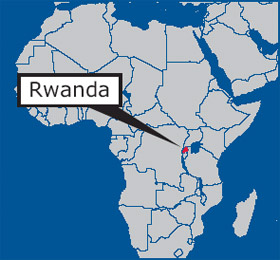US chose to ignore Rwandan genocide | World news | The Guardian."
Latest US news, world news, sport and comment from the Guardian
guardiannews.com
| The Guardian *. N.p., n.d. Web. 14 Feb. 2013.Latest US news, world news, sport and comment from the Guardian
guardiannews.com
http://www.guardian.co.uk/worl
Category. "Tutsis and Hutus - Why There Is Conflict Between Tutsis and Hutus." *World News - About World News from Bridget Johnson*. N.p., n.d.
 |
| If you had wondered where on the map Rwanda is, it is the small red area on this map of Africa. |




